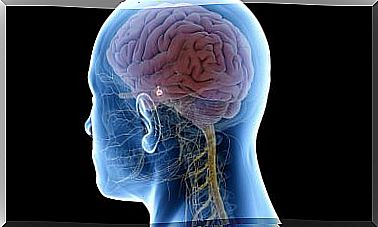Schizoaffective Disorder: Everything You Need To Know
Schizoaffective disorder combines some symptoms of schizophrenia with others that correspond to alterations in mood. As the latter are expressed, there are two variants: the bipolar type and the depressive type.
This means that the signs of schizophrenia occur together with episodes of mania and sometimes major depression (bipolar form). They can also be accompanied only by depressive states (depressive mode).
As with other mental illnesses, the evolution of the disorder is different in each person. Therefore, the need to individualize the intervention is a priority at all times. We will tell you more about it below.
Aspects to consider in schizoaffective disorder
The following sections explain the origin of the term, what are some of its causes, symptoms, and possible treatments.
A little history
The term schizoaffective disorder was coined by Jacob Kasanin in 1933. This psychiatrist characterized it as a psychotic illness that included both affective and schizophrenic symptoms. In addition, he observed that its onset was acute in youth and after a stressful life event.
Later other authors continued investigating more cases. For example, in 1963 Vaillant used this category to refer to improving schizophrenia patients.
Today the Diagnostic and Statistical Manual of Mental Disorders classifies this condition in the spectrum of schizophrenia and other psychotic disorders.
Etiology of schizoaffective disorder
The prevalence of this disorder is around 0.3%, as indicated by research carried out in 2017 by a group of scientists from the University of Hong Kong.
Regarding the possible causes, several variables have been identified, such as the following:
- Genetic factors. Those who have a first-degree relative with the disorder are at higher risk of developing it. This is also pointed out by the authors of the publication we have just cited.
- Environmental factors. These same researchers also speak of the influence of adverse socio-economic conditions. Such events appear to be associated to a greater extent with the manifestation of this class of disorders.
- Physical factors. There are structural differences in the brains of these patients. Thus, a study by Dr. Benedikt L. Amann and his team found alterations in the gray matter of the brain of people with schizoaffective disorder.
Symptoms of schizoaffective disorder
This disorder can take a bipolar form (which occurs with mania and depression) or be expressed under a depressive subtype (with major depression). In addition, according to its diagnostic criteria, symptoms include:
- A significant alteration of the mood (mania or depression) during a continuous period.
- This condition concurs with signs of schizophrenia, such as delusions, hallucinations, disorganized speech or behavior, or apathy.
- In addition, the disorder is not explained by the use of any substance (drugs or medications) or another disease.

These symptoms often interfere with the daily functioning of the patient. That is, the evolution of the disorder causes consequences in different areas. In this way, academic or work difficulties are common. Social interactions and self-care are also affected.
Treatment
The intervention in these cases combines drug therapy with psychological therapy:
- Medications administered include antipsychotics and sometimes antidepressants.
- In the psychotherapy process, the patient is informed about the disorder. In turn, different techniques are incorporated so that he learns to recognize and address the symptoms.
- Self-help groups are also a valuable resource for managing illness.
- Hospitalization may sometimes be necessary to control symptoms.
Some implications to consider
As we can see, the approach to schizoaffective disorder requires action from different levels.
On the one hand, if the person is aware of their disease and is involved in treatment, the evolution can be positive. On the other hand, with the appropriate family, social and health support, the patient’s quality of life improves significantly.
Let us remember that as society becomes more informed, we will have taken another step in understanding mental illnesses like this one.









